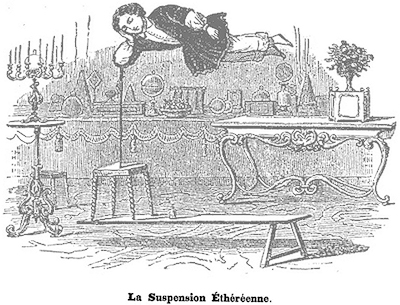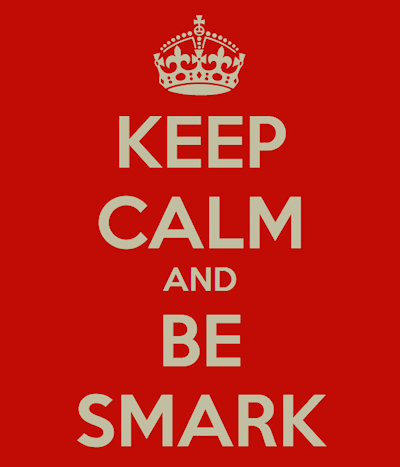MARIANO TOMATISWONDER INJECTORItalian writer and magician
|
 Magic & AwarenessBe smark! Lucid self-delusion in Robert-Houdin’s magic Posted on friday 27 june 2014, 42 days before scifoo14 • Written by Mariano TomatisIn an article (1) dedicated to Jean-Eugène Robert-Houdin, the father of modern magic, Joshua Landy highlights the innovative aspects of his approach to conjuring. He was the first magician to abandon ceremonial robes and ritual formulas of esoteric tradition. He dressed in civilian stylish clothes, claiming the domain of science and reason on the charlatanism. His books unveiled the misdeeds of witches and cardsharpers, and his art was explicitly designed to offer new experiments divested of all charlatanism. (2) As Landy points out, he generally considered himself an active force for disenchantment, a champion of enlightenment in its continuing struggle against credulity. Nevertheless, Robert-Houdin is remembered as one of the finest (re)enchanter of his era. How could he reconcile the two attitudes? Landy illustrates the paradox by describing one of the most well-known magical effects of the French magician — the “ethereal suspension” (1847). He announced it on stage with these words: Gentlemen, I have just discovered a new, truly wondrous property of ether. When this liquid is at its highest degree of concentration, if a living being breathes it, the body of the patient becomes in a few moments as light as a balloon. After this introduction, the son of Robert-Houdin was raised in a horizontal position, supported on one side by a simple stick, demonstrating the possibility that a human being could levitate.  Landy comments: In order to be enthralled, then, audience members did not have to believe Robert-Houdin possessed of mystical powers, or even particularly skillful. They had only to believe in the mysteries of science. Perfectly mixing (1) the narrative context offered by Robert-Houdin at the beginning, (2) the prior knowledge of some rudiments of science and (3) the perfect execution of the experiment (which included the use of scented bottles, smelling of ether), the illusion was impeccable. Somehow, the French magician showed that, presented in the right way, the same science “used” by Enlightenment to disenchant the world — discrediting religion and superstition — was able to re-enchant it, successfully evoking a sense of wonder. Landy summarizes it by writing: Performers like Robert-Houdin, even as they demystified old superstitions, were simultaneously replacing these with new sources of enchantment — indeed disenchanting by re-enchanting. But there is more. The French prestidigitateur did not contribute to the re-enchantment of the world through science, but through an illusion of science; we must keep in mind that in his flasks there was no ether, but a colored essence just imitating it, nor the levitation was really produced by a chemical. He said to use a science (ether) but used another (which one? Secret!) — and the spell emerged from this fundamental gap. It is the same with modern mentalists: they say to use a science (NLP) but use another (which one? Secret!) — and the spell emerges. The ideal audience of Robert-Houdin had to develop sophisticated skill: to be deceived in a voluntary and conscious way. Too religious individuals (who attributed magical effects to the Devil) missed such an ability, but also those with a inadequate scientific background (actually attributing the levitation to Ether) and the cynical/militant skeptics (who labeled his performances as insults to intelligence). Landy adds that Only those spectators who, with a mental agility equal to his manual dexterity, were ready to don and doff their lucidity repeatedly throughout the show, could respond appropriately to the Ethereal Suspension. [...] What Robert-Houdin required was, so to speak, an ethereal suspension of disbelief. Aiming to shape this kind of reaction in the audience, with a true emancipatory attitude, the magician could provide valuable stimuli: his shows were opportunities to hone a detached credulity — an attitude that could be extended to daily life, re-enchanting it in its entirety. Landy called the ethereal suspension “a model for the construction of a belief system that recognizes itself as illusory”. From the point of view of the magician, it requires a lot of efforts to maintain intermediate positions, but the price paid for emancipating the audience is fully paid off by the responses of the spectators. (3) In his best selling book Sum neuroscientist David Eagleman wrote about a fascinating intermediate philosophical position, lying between faith and agnosticism. Describing himself as “possibilist,” Eagleman does not adhere to any specific religious faith — admitting that he lacks sufficient rational data to choose one or the other. This lack, which leads the agnostic to stop and suspend judgment, is not an obstacle for him: possibilists deem interesting to cultivate multiple hypotheses about the nature of the transcendent, in a creative game that fully embodies the “detached credulity.” Eagleman’s stories staged in 40 possible afterlives literally ooze irony — the key ingredient to ease in the reader a healthy detachment. Citing Friedrich Schiller, the Nobel prize-winner Orhan Pamuk labels the two categories “Naive” and “Sentimental” readers — the first unaware of the existence of tricks behind the curtain, the second lacking the ability to enjoy the illusion. I prefer the two labels used in professional wrestling, with the same meaning — “Mark” and “Smart”. Each artist can actively adopt an emancipatory attitude towards her audience, refusing the dicotomy and aiming at a “Smark” reaction. Shaping in the audience the sophisticated skill of “detached credulity” is the most ambitious challenge for a modern magician.  _________________ (1) Joshua Landy, “Modern Magic: Jean-Eugène Robert-Houdin and Stéphane Mallarmé” in Joshua Landy and Michael Saler, The Re-Enchantment of the World: Secular Magic in a Rational Age, Stanford University Press, Stanford, 2009. (3) Among modern illusionists, the best attempts in pursuing detached credulity are the ones by Penn&Teller, Max Maven and Derren Brown. You could be interested also in: |
 Science Foo Camp (or “Sci Foo”) is an invitation-only gathering organized by Digital Science, O'Reilly Media, and Google, with support from Nature. The 9th edition of Sci Foo takes place on 8-10 August 2014 at the Googleplex in Mountain View, CA. Lord Martin Rees has defined it as “a sort of mini Woodstock of the Mind”. Participants include researchers, writers, educators, artists, policy makers, investors, and other thought leaders, all doing groundbreaking work in diverse areas of science and technology.
Science Foo Camp (or “Sci Foo”) is an invitation-only gathering organized by Digital Science, O'Reilly Media, and Google, with support from Nature. The 9th edition of Sci Foo takes place on 8-10 August 2014 at the Googleplex in Mountain View, CA. Lord Martin Rees has defined it as “a sort of mini Woodstock of the Mind”. Participants include researchers, writers, educators, artists, policy makers, investors, and other thought leaders, all doing groundbreaking work in diverse areas of science and technology.